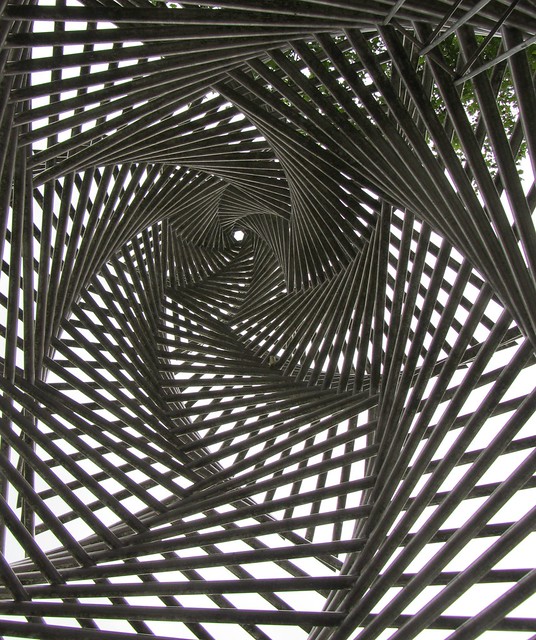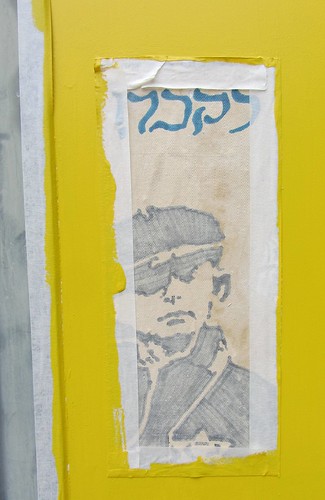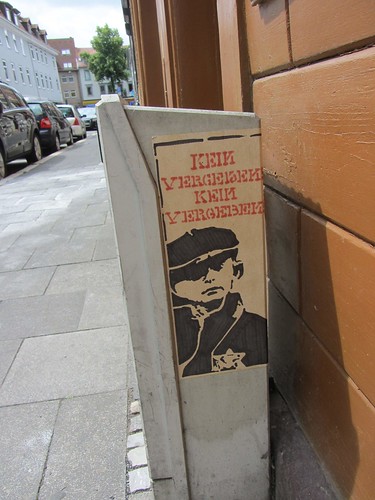 |
| Göttingen: monument on the site of the destroyed synagogue |
 |
| Looking upward into the monument |
I thought about the families who once lived in the neighborhood. A knock at the door, the news that a you must leave. And perhaps for a very small number of them, a return 8 years afterwards to find one's apartment, occupied by people who said, "I heard you were dead."
I didn't want to think about it that way. Göttingen now is a very pleasant and welcoming town -- though there's not a lot to do and see here if you aren't a researcher. The quality and quantity of research at the Max Planck Institute is outstanding; Germany today is a completely different place, a completely different people.
I felt very sad to see how seemingly the synagogue and its monument were so thoroughly forgotten, or at least ignored. A dried-up wreath lay under the main inscription about the community. I went to a flower shop and bought a tiny bouquet to place in the wreath.


Two graffitti not far from the monument suggest that someone is aware of the past, but I have no idea who posted them, and only know that the words in German on the graffiti about not forgiving or forgetting are used in a song with a strong political context. The song appears to have a complicated cultural meaning that I can't understand and might feel even worse if I did. I'm totally over my head in this. Everything I can see about the song is in German. I can't tell if the song is far to the left or far to the right, but I'm pretty sure it's extreme. I also can't read what's written in Hebrew in the other graffiti.
UPDATE: The context of the song is that it's from the anti-fascist left wing politicos in Germany. Our friends who explained it say that a right-wing graffiti in Gottingen would be removed quickly.

No comments:
Post a Comment